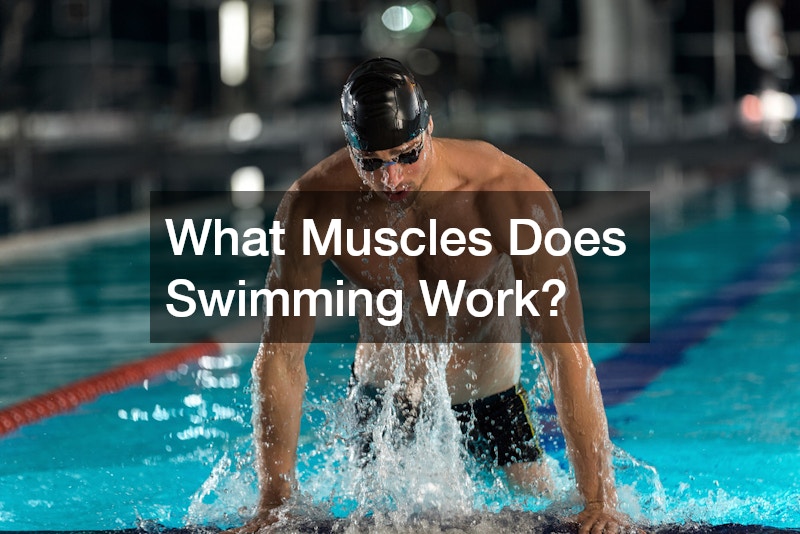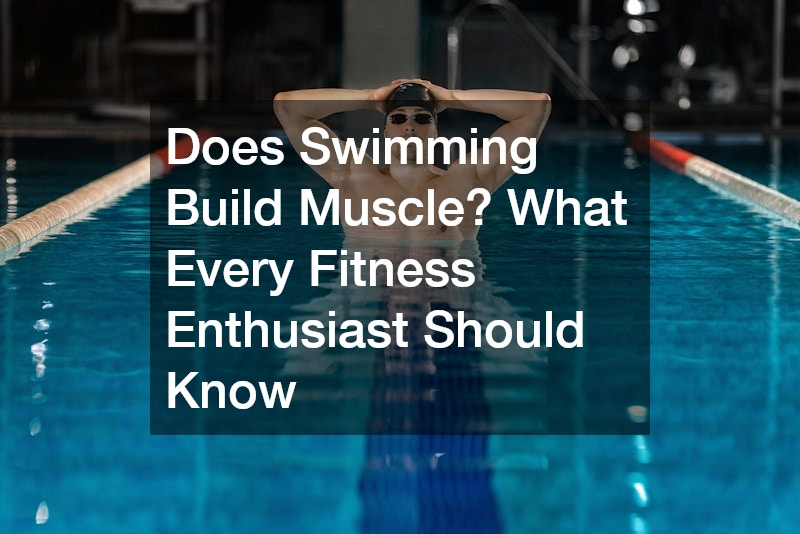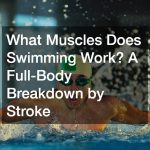
Swimming has long been celebrated as one of the most effective full-body workouts. It’s easy on the joints, great for cardiovascular endurance, and burns serious calories. But many fitness enthusiasts and swimmers often wonder: Does swimming build muscle? The short answer is yes, but there’s more to the story. While swimming isn’t typically associated with bodybuilder-style muscle growth, it absolutely helps develop lean muscle mass, improve muscle tone, and strengthen key areas of your body.
In this article, we’ll break down how swimming contributes to muscle growth, what parts of the body benefit most, and how to enhance your swim workouts for optimal strength-building results. Whether you’re a seasoned swimmer or a gym-goer looking for cross-training ideas, this guide will help you understand the muscle-building potential of swimming.
How Does Swimming Build Muscle?
Swimming builds muscle through resistance. Unlike running or biking, where you’re primarily working against gravity or friction, swimming pits your muscles against the natural resistance of water. Water is 800 times denser than air, making every movement in the pool a resistance exercise—even if it doesn’t feel like it at first.
When you swim, your body pushes against water resistance to move forward. This resistance activates muscles throughout your body, leading to muscle engagement, fatigue, and, over time, growth. While swimming won’t give you bulky muscles like heavy weightlifting, it can develop well-defined, functional strength.
Key ways swimming builds muscle:
- Consistent resistance: Every stroke provides natural resistance to overcome.
- Full-body engagement: Most strokes involve arms, core, and legs.
- Time under tension: Longer swim sessions increase the time muscles are under strain.
What Muscles Does Swimming Work?

Understanding what muscles swimming works can help you structure your swim workouts to target specific areas. Different strokes engage different muscle groups, offering a complete workout that few exercises can match.
Here’s a quick breakdown by stroke:
- Freestyle (Front Crawl):
Works shoulders, lats, core, triceps, and hip flexors. - Backstroke:
Engages the upper back, glutes, hamstrings, and deltoids. - Breaststroke:
Focuses on the chest, inner thighs, biceps, and lower legs. - Butterfly:
Intense on the chest, shoulders, arms, core, and glutes.
These movements build muscular endurance and tone. Over time, regular swimming can lead to a lean, athletic physique.
How Does Swimming Compare to Weight Training?
Both swimming and weight training have their benefits, but the way they build muscle is different. If your goal is hypertrophy (muscle size), lifting heavy weights is typically more efficient. However, if your goal is to build lean muscle, improve mobility, and enhance functional fitness, swimming is highly effective.
Comparison at a glance:
| Category | Swimming | Weight Training |
| Muscle Tone | Excellent | Good |
| Muscle Size | Moderate | High |
| Cardio + Strength | Combined | Separate |
| Joint Impact | Very Low | Can be High |
| Core Engagement | Constant | Variable |
You don’t have to choose one over the other—combining both can create a powerful training plan for strength, endurance, and longevity.
How to Optimize Muscle Growth Through Swimming
While swimming naturally builds muscle, there are ways to enhance its effectiveness. Like any form of exercise, consistency and progression are key to seeing long-term results.
Tips to build more muscle through swimming:
- Incorporate sprint intervals: Short bursts of high effort increase resistance and muscle engagement.
- Use training aids: Tools like hand paddles, kickboards, and drag suits add resistance.
- Swim multiple strokes: Varying your strokes ensures balanced muscle development.
- Increase training volume: Swim more laps or sessions per week to stress muscles consistently.
- Focus on form: Proper technique activates the right muscle groups effectively.
Swimming with a plan—just like you’d structure a gym workout—can dramatically improve your results.
Can You Build Muscle with Swimming Alone?
Yes, but with caveats. Swimming alone can build muscle, especially for beginners or those coming from a sedentary lifestyle. However, progress may plateau if you’re not challenging your muscles regularly or adding variety.
If you want to maximize your muscle-building results without ever stepping into a gym, swimming can still deliver:
- Toned arms and shoulders from strokes like freestyle and butterfly
- Defined legs from constant kicking
- A strong core from balance and rotation
For more pronounced muscle gains, some swimmers supplement their routines with dryland training like resistance bands, calisthenics, or light weights.
Is Swimming Good for Muscle Recovery?

One of the hidden benefits of swimming is its role in active recovery. The low-impact nature of swimming reduces inflammation and promotes blood flow, helping muscles recover faster after intense workouts.
This is especially useful for:
- Runners recovering from leg soreness
- Lifters needing a break from joint-heavy resistance work
- Athletes cross-training during deload weeks
A gentle swim session can flush lactic acid from your system and keep you active while allowing muscles to heal and grow.
Conclusion
So, does swimming build muscle? Absolutely—just in a different way than traditional weightlifting. Swimming provides natural, full-body resistance that builds strength, endurance, and muscle tone. By varying your strokes, adding resistance tools, and swimming consistently, you can develop a strong, athletic physique that performs as good as it looks.
For swimmers and fitness enthusiasts alike, swimming is not just about endurance—it’s a pathway to muscle growth, better mobility, and long-term fitness.


